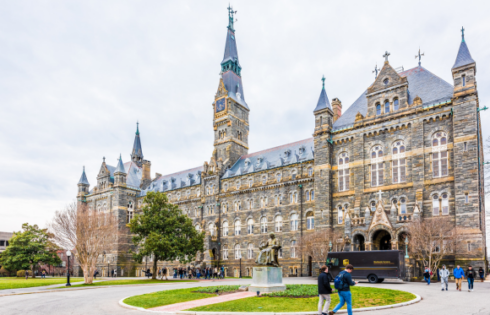The Washington Post has a story out about what it calls a “troubling U.S. trend.” Universities are having trouble recruiting enough students to fill their freshman classes–a problem with huge financial implications for many schools, which rely on students’ tuition dollars to fund their bloated budgets.
The article tells of admissions officers at St. Mary’s College of Maryland branching out across the country in a desperate attempt to recruit more students. Professors are having lunches with potential applicants, hoping to persuade them to enroll. Why such urgency? If colleges can’t achieve full enrollment, they’ll soon have to start cutting costs. (GASP!)
What we are seeing now is only the beginning of the trouble for many mid-tier and lower-tier U.S. colleges. What’s at stake is not simply the budget, but the long-term survival of many colleges.
A little less than a year ago, I wrote a lengthy piece for The American Interest, in which I predicted the future economic collapse of numerous colleges and universities, as they begin to grapple with demographic shifts and technology-driven changes.
We’ve all heard plenty about the “college bubble” in recent years. Student loan debt is at an all-time high—an average of more than $23,000 per graduate by some counts—and tuition costs continue to rise at a rate far outpacing inflation, as they have for decades. Credential inflation is devaluing the college degree, making graduate degrees, and the greater debt required to pay for them, increasingly necessary for many people to maintain the standard of living they experienced growing up in their parents’ homes. Students are defaulting on their loans at an unprecedented rate, too, partly a function of an economy short on entry-level professional positions. Yet, as with all bubbles, there’s a persistent public belief in the value of something, and that faith in the college degree has kept demand high.
The figures are alarming, the anecdotes downright depressing. But the real story of the American higher-education bubble has little to do with individual students and their debts or employment problems. The most important part of the college bubble story—the one we will soon be hearing much more about—concerns the impending financial collapse of numerous private colleges and universities and the likely shrinkage of many public ones…
Click here to read the full article, “The End of the University as We Know It.”
What the story in the Post seems to be miss is that the problem of under-enrollment is not a temporary one driven by the economic downturn. Rather, it is the beginning of a permanent shift in the business of higher education in this country.
It’s a shift that is sure to disrupt many institutions and individuals in the years ahead. Unfortunately, for colleges like St. Mary’s, the frantic recruitment and wining and dining of applicants will not stop the higher ed bubble from bursting.
Nathan Harden is editor of The College Fix and author of the book SEX & GOD AT YALE: Porn, Political Correctness, and a Good Education Gone Bad.
Like The College Fix on Facebook. / Follow Nathan on Twitter @NathanHarden
(Image: trustypics/flickr)






Please join the conversation about our stories on Facebook, Twitter, Instagram, Reddit, MeWe, Rumble, Gab, Minds and Gettr.